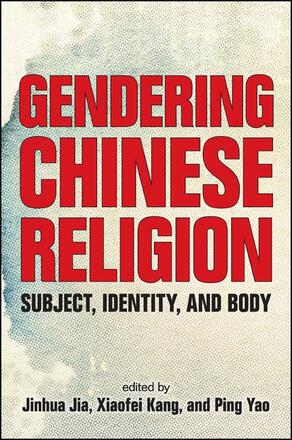
Gendering Chinese Religion
Subject, Identity, and Body
Alternative formats available from:
A gender-critical consideration of women and religion in Chinese traditions from medieval to modern times.
Description
Gendering Chinese Religion marks the emergence of a subfield on women, gender, and religion in China studies. Ranging from the medieval period to the present day, this volume departs from the conventional and often male-centered categorization of Chinese religions into Confucianism, Buddhism, Daoism, and popular religion. It makes two compelling arguments. First, Chinese women have deployed specific religious ideas and rituals to empower themselves in various social contexts. Second, gendered perceptions and representations of Chinese religions have been indispensable to the historical and contemporary construction of social and political power. The contributors use innovative ways of discovering and applying a rich variety of sources, many previously ignored by scholars. While each of the chapters in this interdisciplinary work represents a distinct perspective, together they form a coherent dialogue about the historical importance, intellectual possibilities, and methodological protocols of this new subfield.
Jinhua Jia is Professor of Philosophy and Religious Studies at the University of Macau. Xiaofei Kang is Associate Professor of Religion at the George Washington University. Ping Yao is Professor of History and Director of the Asian and Asian American Studies Program at California State University, Los Angeles.
Reviews
"…the book … gives an inspiring presentation and good analyses of various texts and topics on the crossover between Chinese religious studies and Chinese gender studies, in various epochs, religious communities, and social classes … Even if this pioneer work flags only the starting point of research leading to a proposed 'gender-critical turn' or 'gendering Chinese religion,' it is an important contribution to this very relevant field of the Chinese studies today. " — Monumenta Serica
"An informative read which explores the history of women in Chinese spirituality and tradition. This new sub-specialty is worth watching for what it portends in the larger field of feminist studies in religion. " — Women's Alliance for Theology, Ethics, and Ritual
"…a welcome collection that delivers what it advertises … this volume will continue to inspire future studies that seek to reconceptualize and reimagine Chinese religions from a gender perspective, which might be the greatest of all its contributions. " — Journal of Chinese Religions
"Gendering Chinese Religion breaks new ground in the study of both gender and religion by utilizing an interdisciplinary approach to present new data and stimulating analyses about how women have contributed to Chinese religious life … Its contents will be sure to spark new and exciting research on previously overlooked aspects of Chinese religious life, while it has immense value for classroom use as well. " — Journal of Chinese Studies